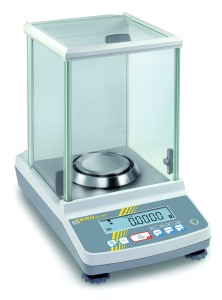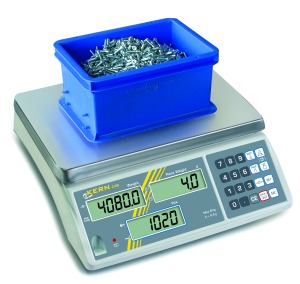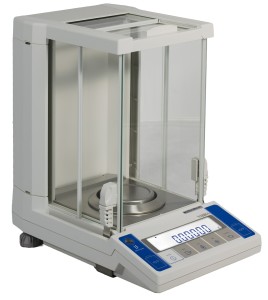Posts Tagged ‘analytical balances’
Analytical Balance Best Practices
It doesn’t take much to throw an analytical balance off. What are the analytical balance best practices to keep your balance without error. The opportunities for errors to occur increase dramatically as the resolution or readout of analytical balances increases. That’s why labs and other users of an analytical balance should establish and post a “best practices” list and remind researchers to employ them at all times.
Once again we refer to the operations manual supplied with analytical balances such as the Kern series offered by Tovatech. These multi-page manuals, however, are not always “user friendly” although most instructions regarding to-do-or-not-to-do are published in the setup pages. Here we provide a brief analytical balance best practices bulletin to serve as a reminder. They are in no particular order of importance because all are important.
That said, a key point to remember is that sensitive balances are sensitive to many extraneous … Read the rest
Inventory Management System Pairs Scale and Balance
An accurate inventory management system combining a reference balance and a bulk scale speeds the flow and accuracy of product quantities from the receiving dock through inventory control and outbound shipments. The high resolution Kern FKC stocktaking counting system, available from Tovatech, quickly calculates stock quantities, which can be transferred to a PC for record keeping. A barcode scanner can be integrated with the stock keeping system to reduce errors in stock identification.
The FKC inventory management system combines a KERN KB-N reference balances and a KERN FKA bulk scale.
Inventory Management System Components
1. Reference Quantities
Reference quantities are established with the Kern KB-N reference balance, available in maximum weighing ranges of 120 (KB 120-3N) or 1200 (KB 1200-2N) grams (4.23 or 42.33 ounces) and respective readout of 0.001 and 0.01 g, also representing the minimum piece weight. Individual piece weight is established by weighing a quantity of product … Read the rest
Tips for Analytical Balance Weighing Accuracy
Accuracy is a prime if not the prime criterion for analytical balances used in industries such as researching and compounding pharmaceuticals. Analytical balance weighing accuracy is a measure of how close the displayed weight is to the actual weight of samples on the weighing pan.
Two terms apply here. The first is readout, which is the smallest difference in weight that can be read and displayed by the unit. For an analytical balance it is typically 0.1 milligram or 0.001 g. Micro and ultra microbalances can weigh lighter samples.
Accuracy is sometimes confused with precision but it is an incorrect assumption. Precise means that results are consistent. However they may be consistently wrong, and therefore not accurate.
Instead, the second term or criterion to look for is linearity. Linearity is the maximum ± deviation of the displayed sample weight vs. the actual sample weight over the weighing range of the … Read the rest
Semi-Micro Analytical Balance Simplifies High Resolution Weighing
The LF-225 DR multi-function dual-range semi-micro analytical balance offered by Tovatech is an ideal solution when highly accurate weighing is required on a regular basis. This balance is crafted in Japan with exceptional quality workmanship. Researchers, jewelers and others can benefit from the readability of 0.01 mg up to a 92 g capacity or 0.1 mg up to a 220 g capacity. Linearity in these ranges is ±0.03 and ±0.02 mg; repeatability is ±0.02 and ±0.1 mg respectively.
The USB port on this Windows® compatible balance simplifies transfer of data to a pc or printer.
Featuring a one-key calibration function the LF-225 DR semi-micro balance has internal weigh chamber dimensions of 6 x 6.25 x 9 inches, an unusually tall space. The novel sliding door mechanism permits users to open the right side glass door with the left hand while placing samples on the weighing … Read the rest
Understanding the 3 Rs + L of an Analytical Balance
Selecting the correct analytical balance for precise weighing is not an easy task. We’ve covered several key points in previous posts but it’s always a good idea to provide a refresher course – especially as it relates to terminology that is sometimes confusing yet important. In this case it’s the 3 Rs: readout, repeatability and reproducibility plus linearity.
We also provide hints on applying these criteria to selecting a lab scale.
R #1: What’s readout? Also called readability it’s what you can read on the scale’s display panel. Simple enough but in terms of specification you’ll have to decide on what you require in terms of the smallest difference displayed when weighing. Usually its 0.1 milligram but in the case of a semi-micro balance it may be 0.01 mg.
R #2: Repeatability is the ability of a balance to display the same result when an object is repeatedly placed … Read the rest
Selecting an Entry-Level Single Cell Analytical Balance

An analytical balance is one of the more precise weighing and measuring tools available to industrial and academic research organizations. Laboratory balances equipped with single cell weighing systems have traditionally represented the high end of these precision weighing systems but at a cost premium. Technology advances have changed that, as evidenced by the new Kern ABS/ABJ series of analytical balances available from Tovatech.
What is Single Cell Weighing?
Simply stated, these systems use a single block of material such as aluminum as the weighing mechanism as opposed to multiple-component conventional balances. Because they have no moving parts there is no wear and tear. As a result these balances continue to perform well for a longer time than scales with conventional weighing mechanisms.
Other important advantaged include improvements in accuracy, precision, speed and reproducibility of weight values due in no small part to … Read the rest
How to Judge Scale Accuracy

At Tovatech we frequently find that customers are confused about weighing terms associated with analytical scales and precision balances, especially as it relates to scale accuracy. This comes as no surprise to us because, in fact, the terminology is confusing. Different manufacturers of analytical balances will use different weighing terms, some of them incorrect, by the way, to describe the performance and accuracy of their products. When you evaluate electronic scales you should compare the performance of a specific manufacturer’s products against each other rather than with those of different manufacturers.
Why Weighing Terms are Important
The importance of scale accuracy applies to many weighing operations across the weighing spectrum from moisture analyzers to counting scales. Some applications are more important than others. For example, you might tolerate a small degree of inaccuracy when weighing out a quantity of … Read the rest


